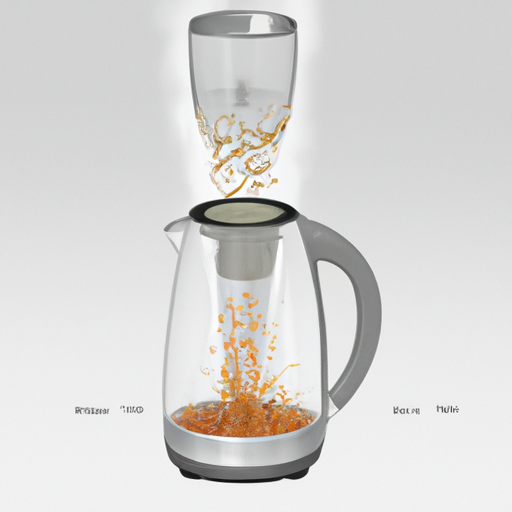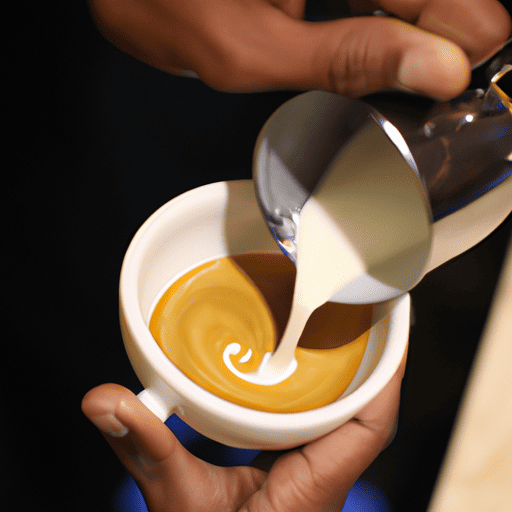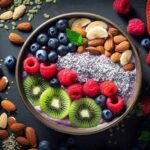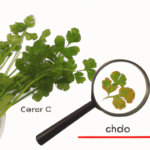Looking for ways to improve your digestive health? We’ve got you covered with four methods that incorporate the advantages of superseeds.
By understanding the important role of the gut microbiome and how chia seeds can support digestion, you’ll be on your way to a healthier gut.
Discover how to easily incorporate chia seeds into your diet and learn about other superseeds that can aid in gut healing.
Get ready to boost your gut health and enjoy the benefits of these nutritious superseeds!

Key Takeaways
- Probiotics, such as live bacteria and yeasts, help restore and maintain a healthy balance of bacteria in the gut.
- Chia seeds are rich in fiber, which adds bulk to the stool and promotes regular bowel movements.
- Chia seeds contain omega-3 fatty acids with anti-inflammatory properties, beneficial for individuals with inflammatory bowel diseases.
- Flaxseeds are rich in omega-3 fatty acids, which help reduce inflammation in the gut.
Understanding the Gut Microbiome
To better understand the benefits of superseeds for improving gut health, let’s delve into the fascinating world of the gut microbiome. The gut microbiome refers to the trillions of microorganisms that reside in our digestive system. These microorganisms play a crucial role in maintaining our overall health, especially when it comes to our gut.
One factor that can significantly impact gut health is stress. When we’re stressed, our body releases hormones that can disrupt the balance of bacteria in our gut, leading to digestive issues. This is where probiotics come into play. Probiotics are live bacteria and yeasts that are good for our digestive system. They help restore and maintain the balance of healthy bacteria in our gut, promoting proper digestion and overall gut health.
Understanding the impact of stress on gut health and the role of probiotics is essential for maintaining a healthy gut.
Now, let’s explore how chia seeds support digestion.

How Chia Seeds Support Digestion
Chia seeds play a crucial role in supporting digestion by providing a rich source of fiber and essential nutrients. Fiber is essential for maintaining a healthy digestive system as it adds bulk to the stool and promotes regular bowel movements. Chia seeds are packed with soluble fiber, which absorbs water and forms a gel-like substance in the digestive tract, helping to soften the stool and ease its passage through the intestines. This can be particularly beneficial for those struggling with constipation.
Additionally, chia seeds contain omega-3 fatty acids, which have anti-inflammatory properties and can help reduce inflammation in the gut. This can be beneficial for individuals with inflammatory bowel diseases.
Incorporating chia seeds into your diet can be as simple as adding them to smoothies, yogurt, or oatmeal, or using them as an egg substitute in baking recipes. By including chia seeds in your daily routine, you can support your digestion and promote overall gut health.
Incorporating Chia Seeds Into Your Diet
We can easily incorporate chia seeds into our diet to improve gut health. Chia seeds have numerous benefits for digestion and can be a versatile addition to many recipes. Here are three ways to incorporate chia seeds into your diet:

- Chia Pudding: Mix chia seeds with your favorite plant-based milk and let it sit in the fridge overnight. In the morning, you’ll have a delicious and nutritious pudding that can be topped with fruits, nuts, or seeds.
- Smoothies: Add a tablespoon of chia seeds to your favorite smoothie recipe for an added boost of fiber, omega-3 fatty acids, and protein. The chia seeds will also help thicken the smoothie, making it more satisfying.
- Baking: Replace eggs in baking recipes with a chia seed ‘egg’. Simply mix one tablespoon of chia seeds with three tablespoons of water and let it sit until it forms a gel-like consistency. This will add moisture and binding properties to your baked goods.
Incorporating chia seeds into your diet is a simple and delicious way to support your gut health. Try these ideas and get creative with your own chia seed recipes to enjoy all the benefits they’ve to offer.
Superseeds for Gut Healing
Incorporating superseeds into our diet can have a profound impact on gut healing and overall digestive health.
When it comes to gut healing, one superseed that stands out is flaxseed. Flaxseeds are rich in omega-3 fatty acids, which have been shown to reduce inflammation in the gut. Inflammation in the gut can lead to a host of digestive issues, such as bloating, gas, and discomfort.
By incorporating flaxseeds into our diet, we can help reduce inflammation and promote gut healing. Flaxseeds can be easily added to smoothies, oatmeal, or yogurt for a nutritious boost. They can also be ground into a powder and used as an egg substitute in baking.

Boosting Gut Health With Chia Seeds
To start improving our gut health with chia seeds, let’s explore their benefits and how they can be incorporated into our diet.
Chia seeds are a nutritional powerhouse packed with fiber, omega-3 fatty acids, and antioxidants.
Here are three ways to boost our gut health with chia seeds:
- Chia seed pudding: Mix chia seeds with your favorite milk and sweetener, then let it sit overnight. In the morning, you’ll have a delicious and gut-friendly breakfast option.
- Chia seed smoothies: Blend chia seeds into your favorite smoothie for an added nutritional boost. The seeds will add a thick and creamy texture to your drink.
- Chia seed crackers: Make your own chia seed crackers by combining chia seeds, flaxseeds, and spices. Bake them until crispy for a healthy snack option.
Incorporating chia seeds into our diet can improve digestion, promote regular bowel movements, and support overall gut health.

Frequently Asked Questions
Can Superseeds Cure All Digestive Issues?
Superseeds have the potential to improve gut health, but they may not cure all digestive issues. While they offer benefits like fiber and omega-3 fatty acids, their limitations include individual variations and the need for a balanced diet.
What Is the Recommended Daily Intake of Chia Seeds for Improving Gut Health?
The recommended daily intake of chia seeds for improving gut health is about 1-2 tablespoons. Chia seeds are also known to have other potential benefits for gut health, such as reducing inflammation and promoting regular bowel movements.
Are There Any Potential Side Effects of Consuming Chia Seeds for Gut Health?
There may be potential side effects of consuming chia seeds for gut health, but it depends on the individual and their recommended daily intake. It’s important to listen to your body and consult a healthcare professional if needed.
Can Chia Seeds Help With Weight Loss as Well as Improving Gut Health?
Chia seeds are known for their potential benefits in both weight loss and improving gut health. They are low in calories and high in fiber, which can help promote feelings of fullness and support healthy digestion.

Are There Any Specific Conditions or Situations Where Chia Seeds May Not Be Suitable for Improving Gut Health?
Sure, there may be certain conditions or situations where chia seeds may not be suitable for improving gut health. It’s important to be aware of potential side effects such as bloating or digestive discomfort.
Conclusion
Incorporating chia seeds into your diet is a simple and effective way to improve your gut health. These superseeds are packed with fiber and omega-3 fatty acids, which support digestion and promote a healthy gut microbiome.
By adding chia seeds to your meals or snacks, you can boost your overall gut health and experience the benefits of improved digestion. So why wait? Start incorporating these tiny powerhouses into your diet and witness the transformation in your gut health.
It’s like giving your gut a superhero cape!

















